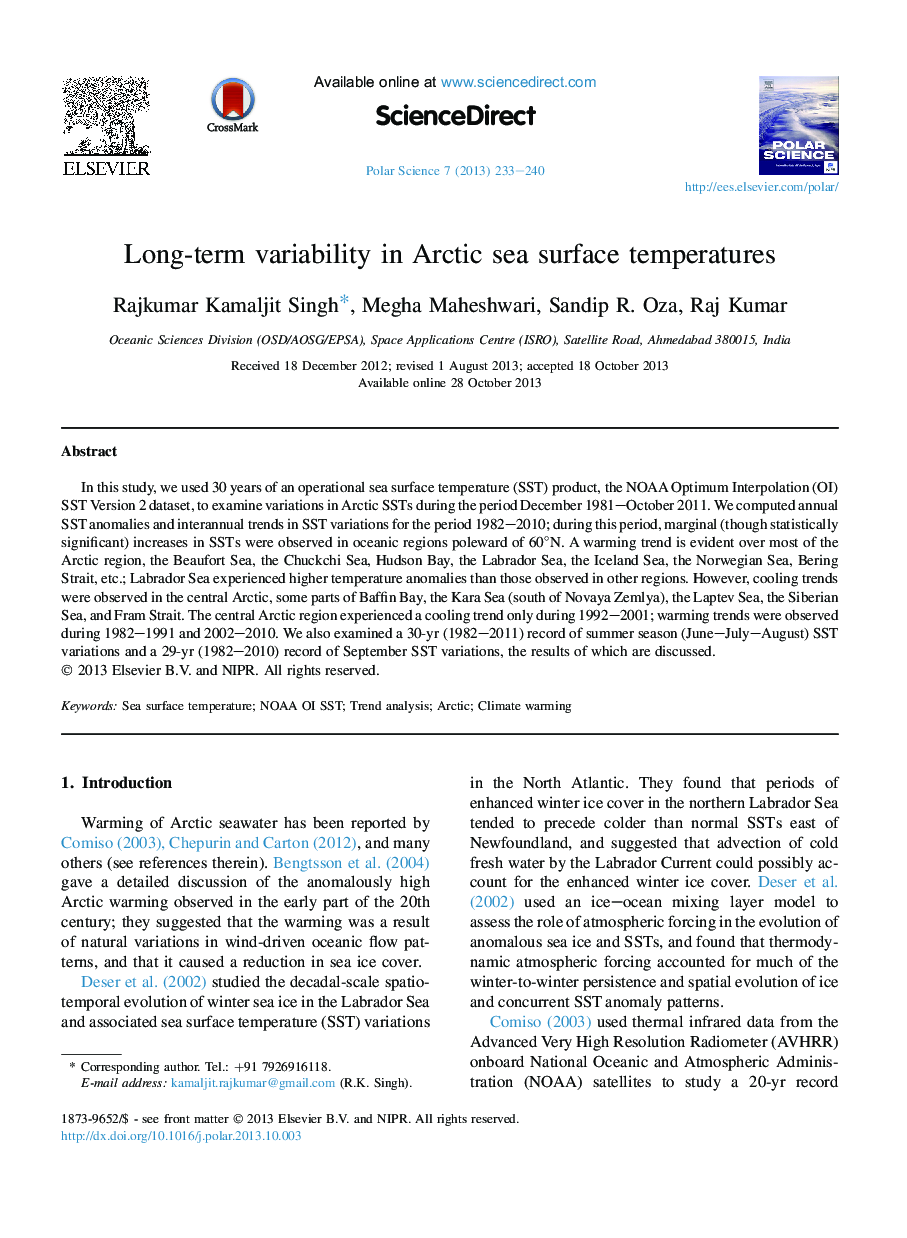| Article ID | Journal | Published Year | Pages | File Type |
|---|---|---|---|---|
| 4683215 | Polar Science | 2013 | 8 Pages |
In this study, we used 30 years of an operational sea surface temperature (SST) product, the NOAA Optimum Interpolation (OI) SST Version 2 dataset, to examine variations in Arctic SSTs during the period December 1981–October 2011. We computed annual SST anomalies and interannual trends in SST variations for the period 1982–2010; during this period, marginal (though statistically significant) increases in SSTs were observed in oceanic regions poleward of 60°N. A warming trend is evident over most of the Arctic region, the Beaufort Sea, the Chuckchi Sea, Hudson Bay, the Labrador Sea, the Iceland Sea, the Norwegian Sea, Bering Strait, etc.; Labrador Sea experienced higher temperature anomalies than those observed in other regions. However, cooling trends were observed in the central Arctic, some parts of Baffin Bay, the Kara Sea (south of Novaya Zemlya), the Laptev Sea, the Siberian Sea, and Fram Strait. The central Arctic region experienced a cooling trend only during 1992–2001; warming trends were observed during 1982–1991 and 2002–2010. We also examined a 30-yr (1982–2011) record of summer season (June–July–August) SST variations and a 29-yr (1982–2010) record of September SST variations, the results of which are discussed.
